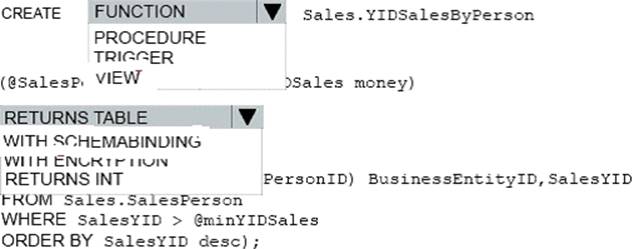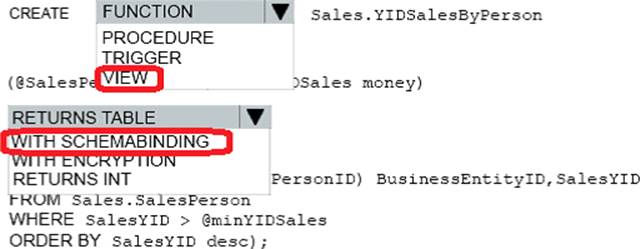How should you complete the Transact-SOL statements?
Notify the sales person who places an order whether or not the order was completed.
You must add the following constraints to the SalesHistory table:
– a constraint on the SaleID column that allows the field to be used as a record identifier
– a constant that uses the ProductID column to reference the Product column of the ProductTypes table
– a constraint on the CategoryID column that allows one row with a null value in the column
– a constraint that limits the Sale Price column to values greater than four Finance department users must be able to retrieve data from the SalesHistory table for sales persons where the value of the SalesYTD column is above a certain threshold.
You plan to create a memory-optimized table named SalesOrder.
The table must meet the following requirments:
– The table must hold 10 million unique sales orders.
– The table must use checkpoints to minimize 1/0 operations and must not use transaction logging.
– Data loss is acceptable.
Performance for queries against the SalesOrder table that use where clauses with exact equality operations must be optimized.
You need to create an object that allows finance users to be able to retrieve the required data. The object must not have a negative performance impact.
How should you complete the Transact-SOL statements? To answer, select the appropriate TransactSOL segments in the answer area.

Answer: 
Latest 70-762 Dumps Valid Version with 157 Q&As
Latest And Valid Q&A | Instant Download | Once Fail, Full Refund

